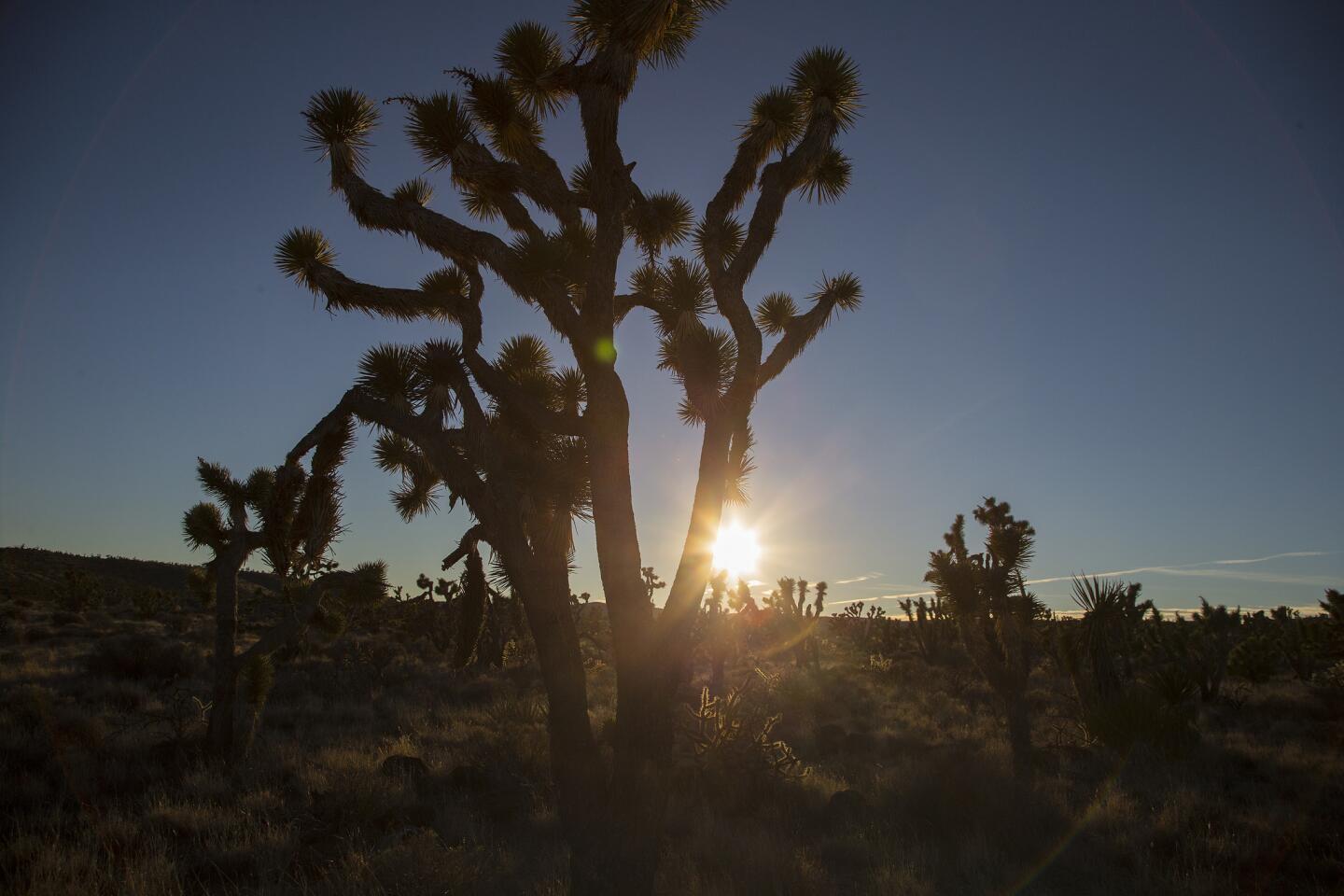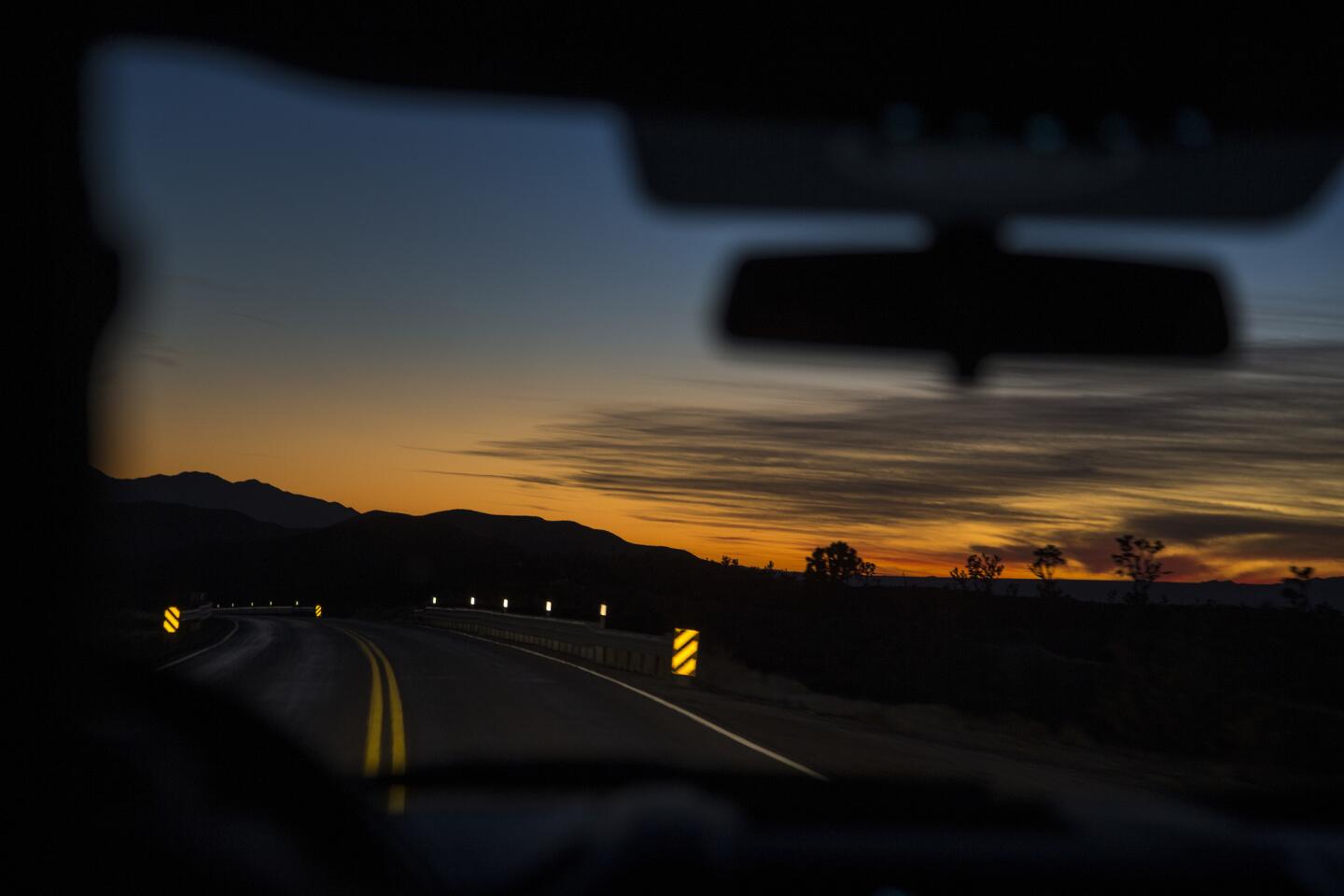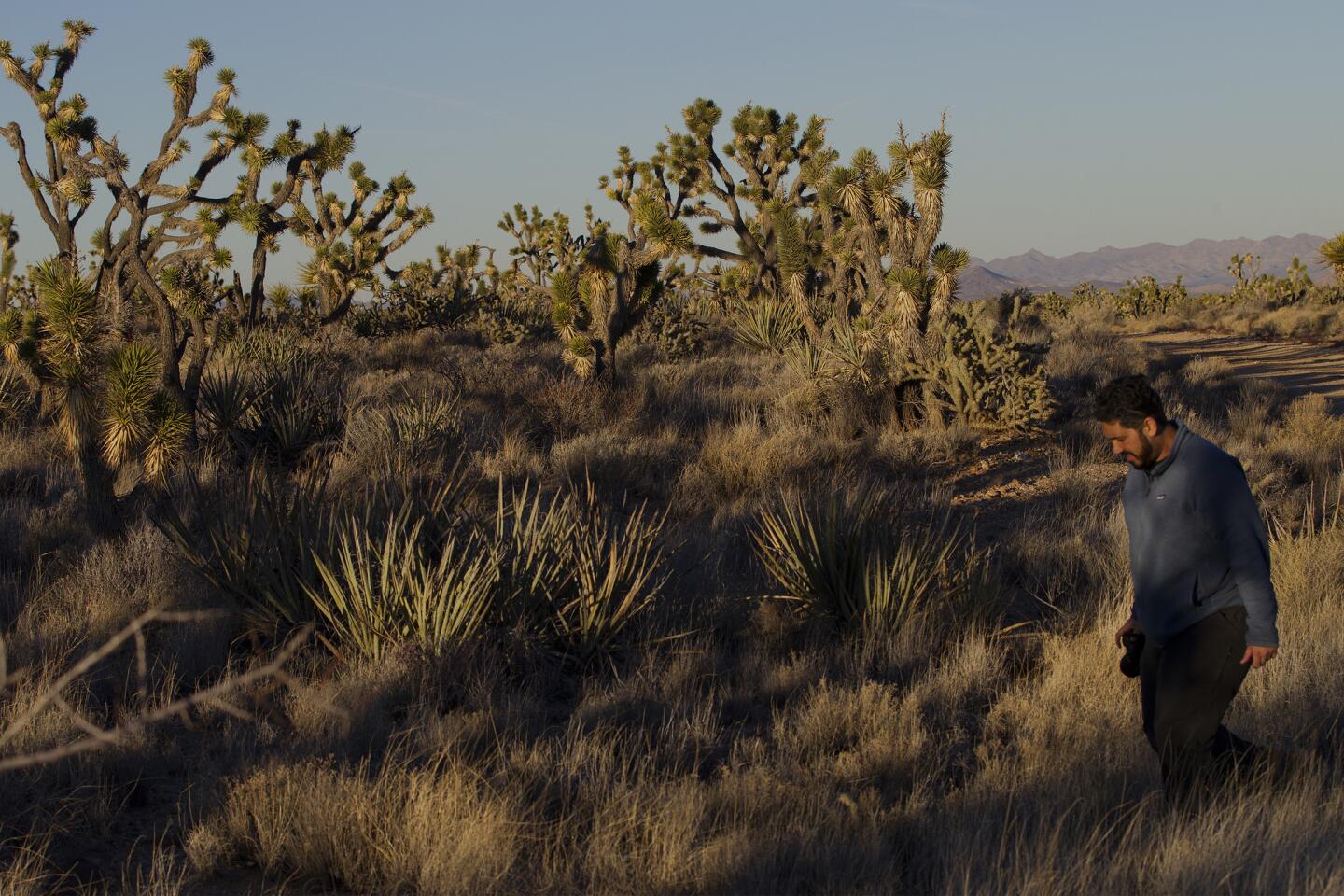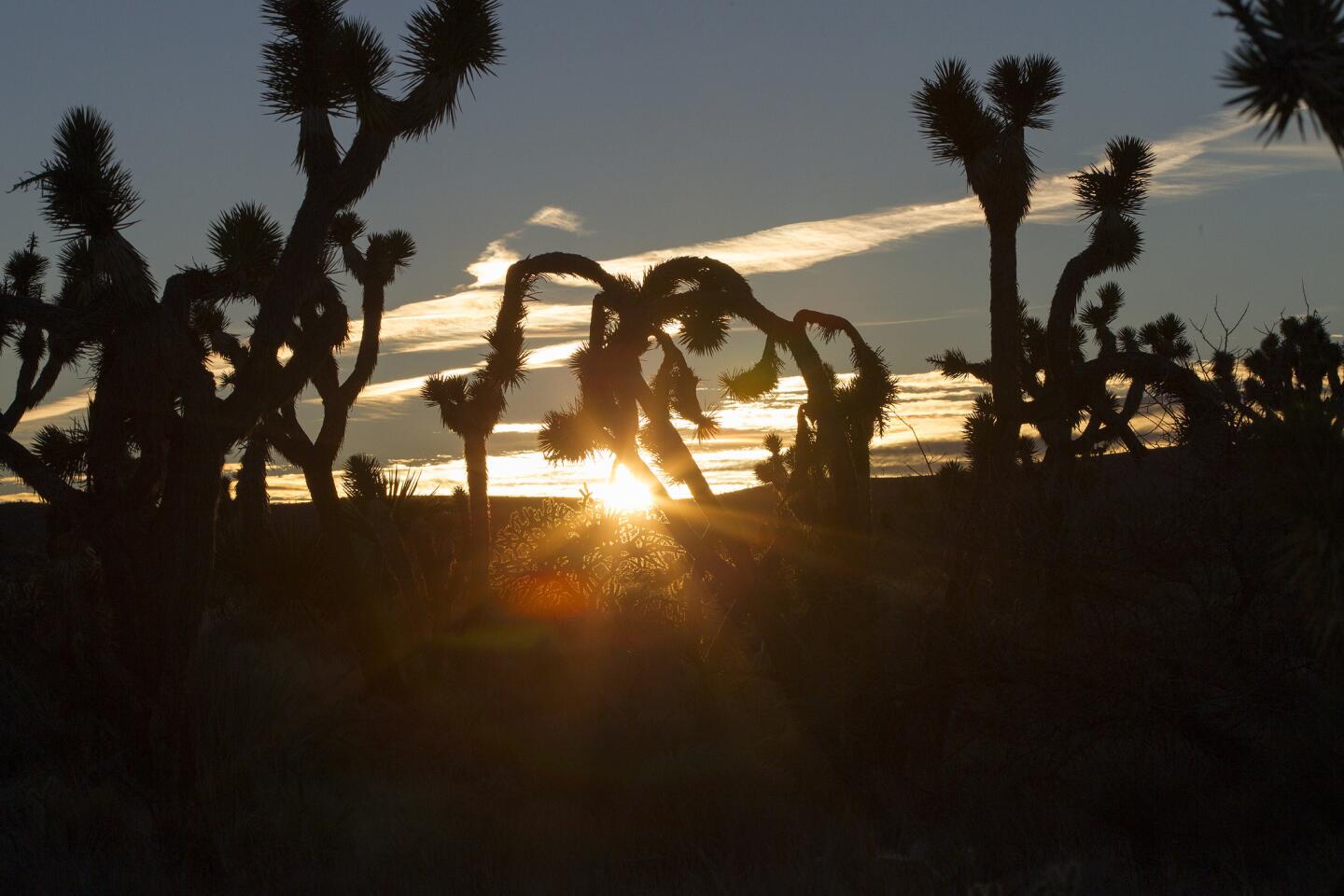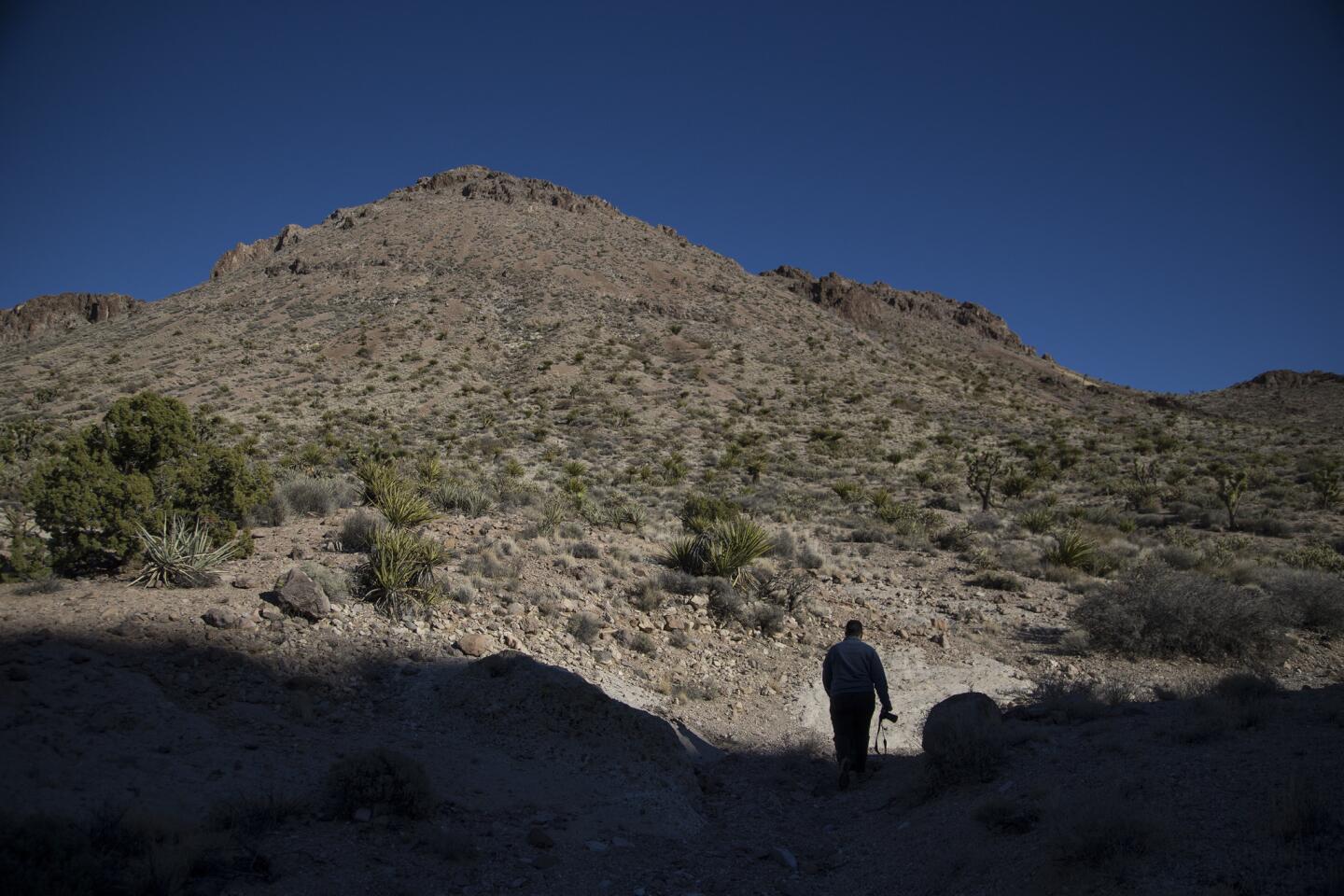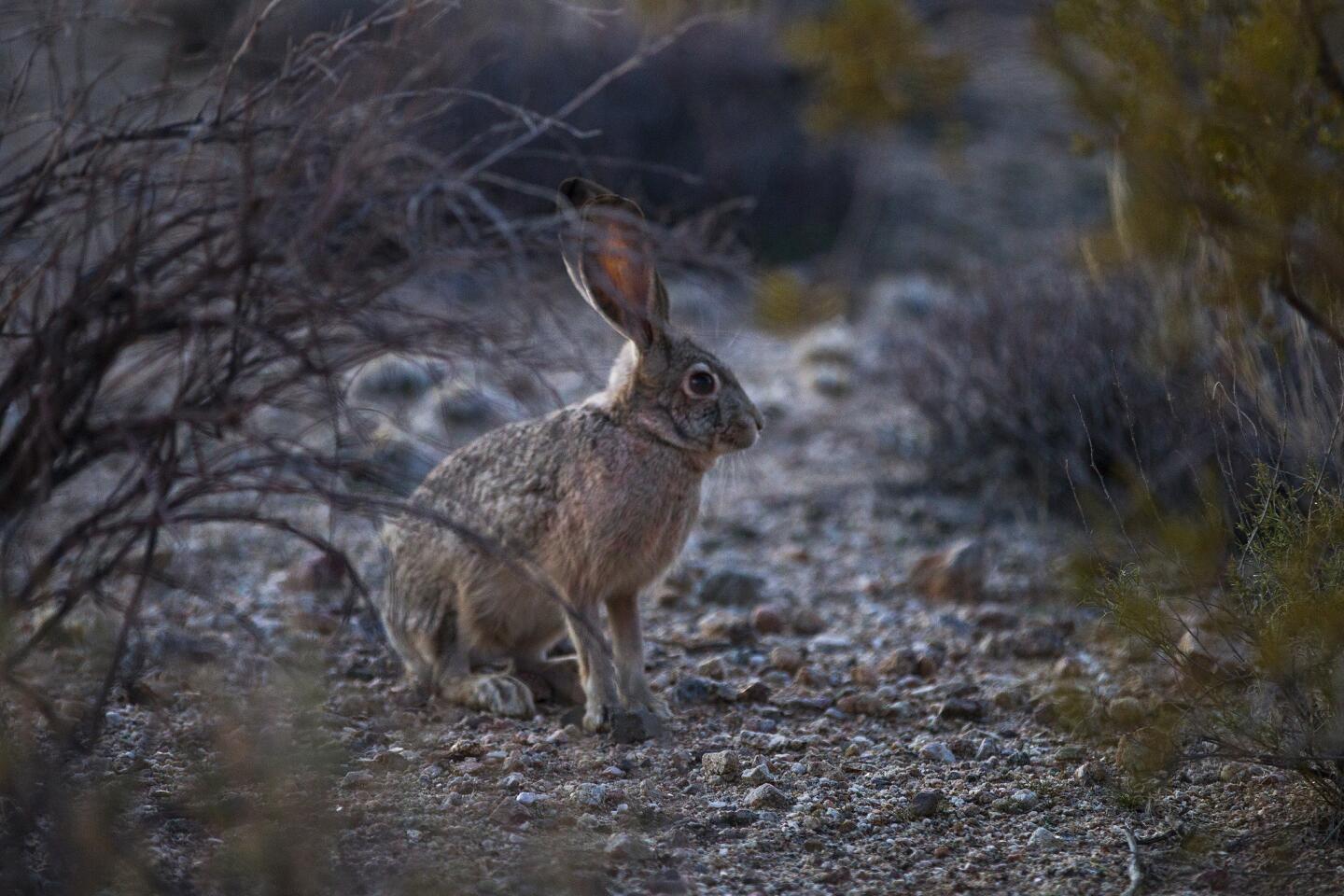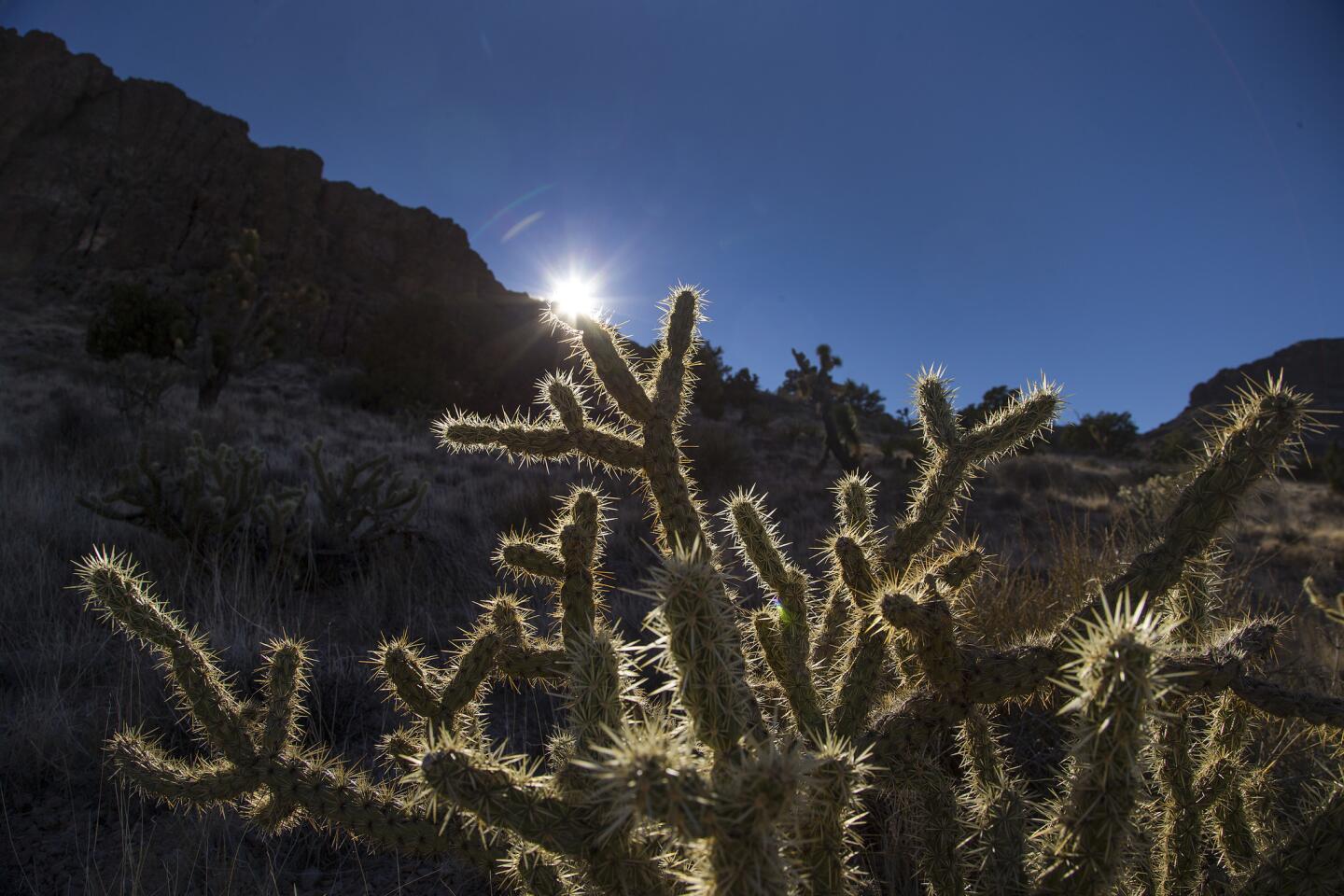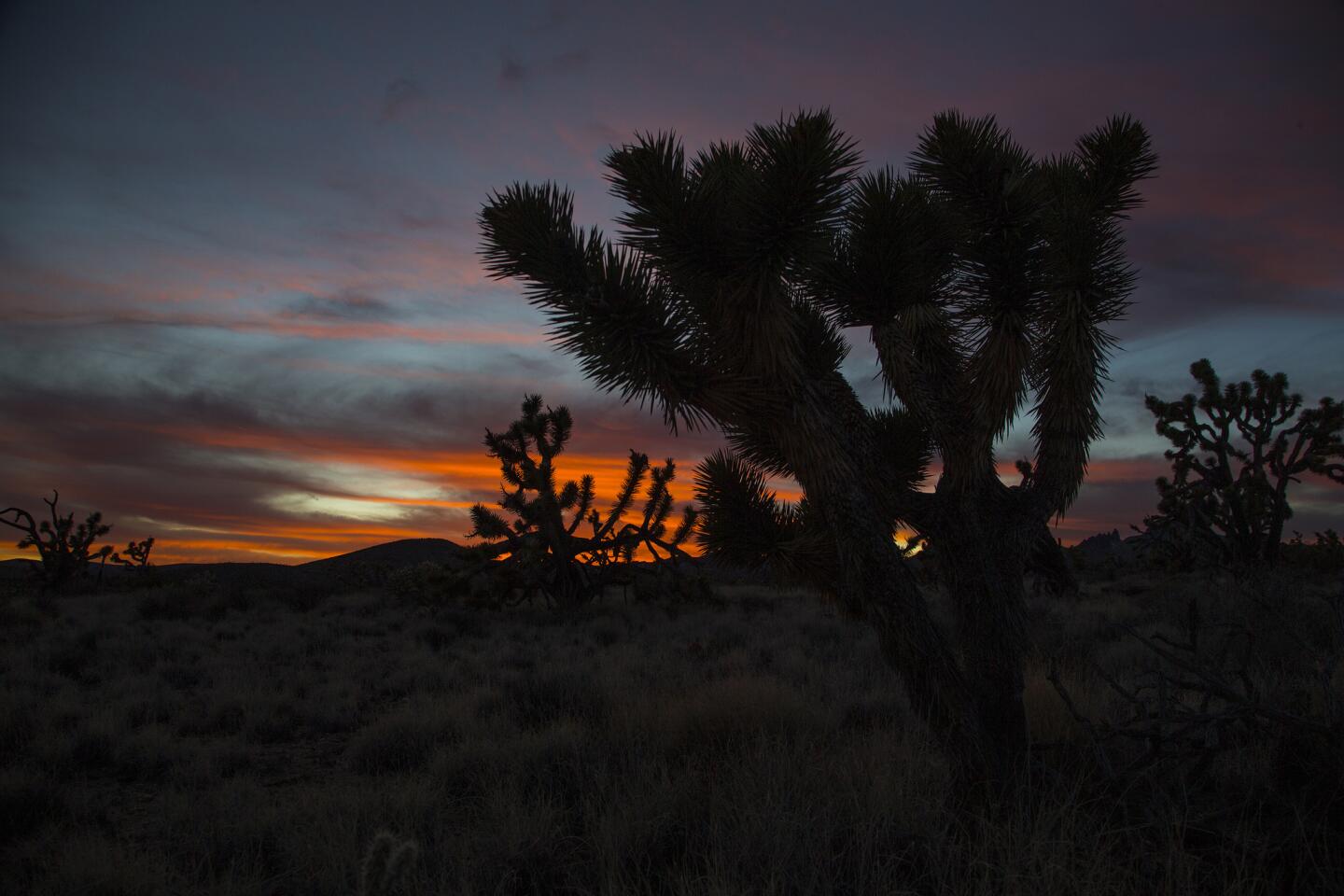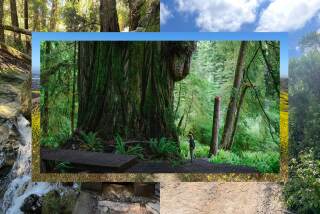Volcanic spires and Joshua trees: Obama protects 1.8 million acres in California’s desert
Reporting from BARSTOW — President Obama designated three new national monuments in the California desert Thursday, expanding federal protection to 1.8 million acres of landscapes that have retained their natural beauty despite decades of heavy mining, cattle ranching and off-roading.
The designation was requested by U.S. Sen. Dianne Feinstein, who for a decade has sought to protect land that wasn’t included in the 1994 California Desert Protection Act. That measure covered nearly 7.6 million acres, elevated Death Valley and Joshua Tree to national park status and created the Mojave National Preserve.
Unable to gain momentum on her California Desert Conservation and Recreation Act last year, Feinstein and conservation groups asked Obama to act unilaterally to create the three monuments overlapping biological zones between roughly Palm Springs and the Nevada border.
NEWSLETTER: Get essential California headlines delivered daily >>
The areas embrace volcanic spires, dunes, ribbons of wetlands wedged between steep canyon walls, grasslands, Joshua tree forests, historic roadways and petroglyphs. They are home to species that thrive despite withering heat and scant rainfall: bighorn sheep, tortoises, fringe-toed lizards and more than 250 types of birds.
“The effort to preserve the California desert has been a long one, and today is a major milestone,” Feinstein said. “This kind of landscape is so much a part of what the West once was, and these monuments are icons of our cultural heritage. Simply put, the California desert is a national treasure. This designation only reaffirms that fact.”

The Castle Mountains encompass native desert grasslands and wildlife habitat for Golden Eagles, and some of the finest Joshua tree forests in the California Desert.
Concern over the long-term health of the deceptively delicate terrain spurred Obama to designate the Mojave Trails, Sand to Snow and Castle Mountains monuments under the 1906 Antiquities Act, which authorizes presidents to create national monuments on federal land to protect “objects of historic and scientific interest.”
With his second term winding down, Obama has now protected more than 265 million acres of land and water, more than any other administration. A year ago, Obama designated much of the Angeles National Forest as the San Gabriel Mountains National Monument.
The designations, which do not include funding, were supported by groups including the nonprofit National Parks Conservation Assn., the Sierra Club, Defenders of Wildlife, the Center for Biological Diversity and the Mojave Desert Land Trust.
Much of the land was purchased more than a decade ago by private citizens and the Wildlands Conservancy, then donated to the U.S. Bureau of Land Management in anticipation of its eventually receiving the protection of national monument status.
“This is the pinnacle of a 15-year effort to preserve the physical heart of the Mojave Desert for conservation, recreation and unparalleled inspiration,” said David Myers, executive director of the Wildlands Conservancy.
See the most-read stories this hour >>
The designations preserve unique natural and cultural resources and enhance the region’s economic activity by attracting visitors, increasing tourism and ensuring public access for hiking, camping, hunting, fishing, rock climbing and other outdoor recreational activities.
Mojave Trails National Monument encompasses 1.6 million acres of federal land and former railroad property along a 105-mile stretch of old Route 66 between Ludlow and Needles. It protects wildlife corridors linking Joshua Tree National Park and the Mojave National Preserve.
Sand to Snow National Monument, about 45 miles east of Riverside, includes about 154,000 acres of federal land between Joshua Tree National Park and the San Bernardino National Forest in San Bernardino and Riverside counties.
The area includes 24 miles of the Pacific Crest Trail, an estimated 1,700 petroglyphs and Big Morongo Canyon, a bird-watching destination along a perennial stream designated a federal Area of Critical Environmental Concern in 1982.
Castle Mountains National Monument encompasses 20,920 acres featuring a row of jagged peaks rising above contorted Joshua trees and rare native desert grasslands between Interstates 15 and 40, about 100 miles south of Las Vegas. The area includes the historic mining camp of Hart, about 10 miles from the Nevada border.
It surrounds — but does not include — an open-pit mine at the southern end of the Castle Mountains owned by NewCastle Gold Ltd., of Canada, which has a permit allowing it to excavate nearly 10 million tons of ore through 2025. Mining at the site was suspended in 2001 because of low gold prices.
David Lamfrom, director of California desert and wildlife programs for the National Parks Conservation Assn., has spent nearly a decade arguing the cause of conservation in the Castle Mountains.
On a recent visit, Lamfrom’s pickup truck was the only vehicle in sight along a washboard dirt road lined with pinyon pine trees and barrel and cholla cactus on the northern flanks of the range he calls “one of California’s greatest scenic attractions.”
Lamfrom brought his truck to a stop on a ridge overlooking a prairie of native grasses stretching for miles in all directions. Giving the vista an approving nod, he said, “A few centuries ago, Mexican wolves chased pronghorn antelope across this very landscape.
“We’re already in discussions with federal wildlife authorities,” he added, “about taking the next step: reintroducing species of a bygone era, starting with pronghorn antelope.”
Twitter: @louissahagun
ALSO
How scientists detected gravitational waves for the first time
Road to recovery begins in Porter Ranch as gas leak is halted at last
President’s fundraisers and ‘Ellen’ taping in L.A. spark Obamajam traffic gridlock
